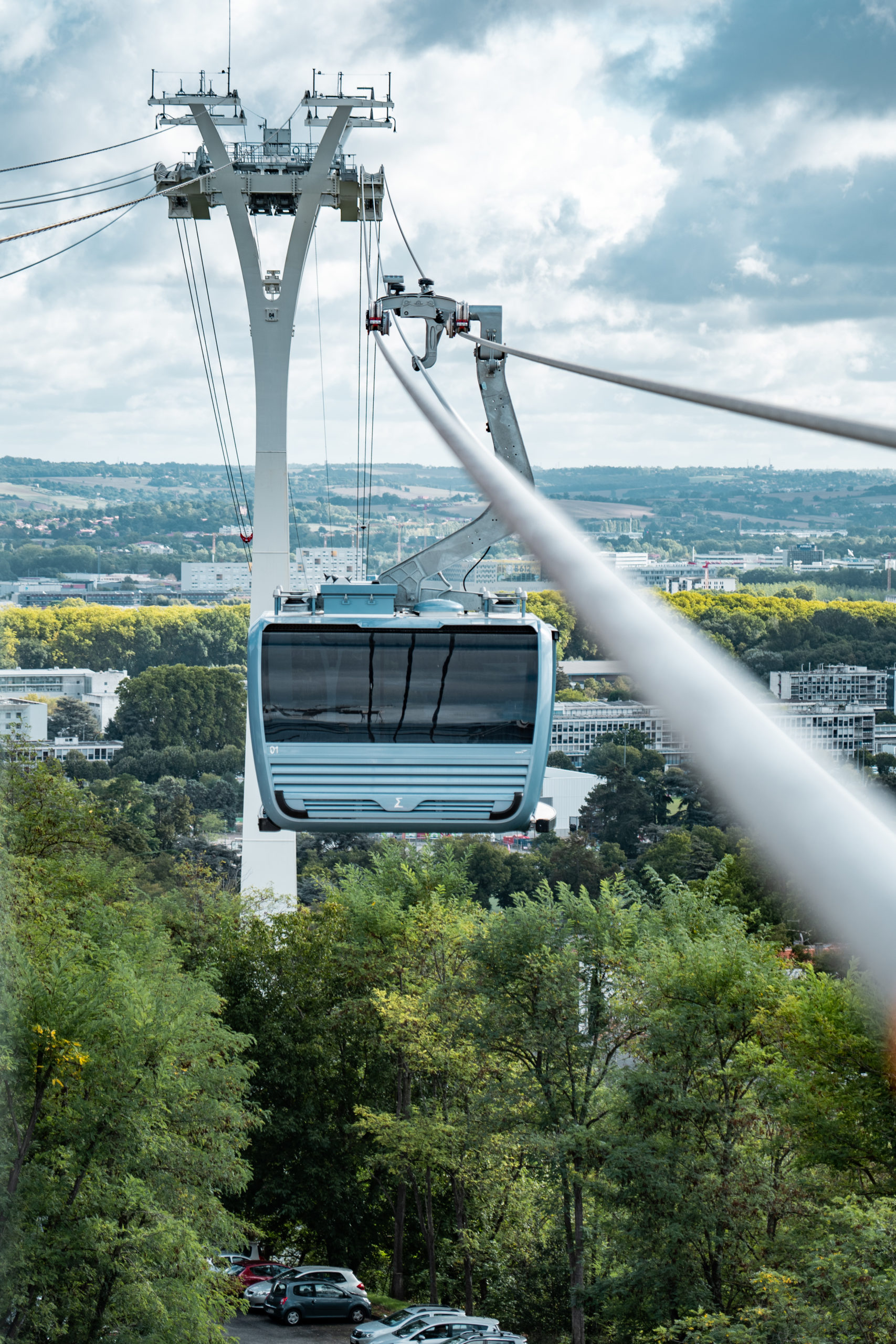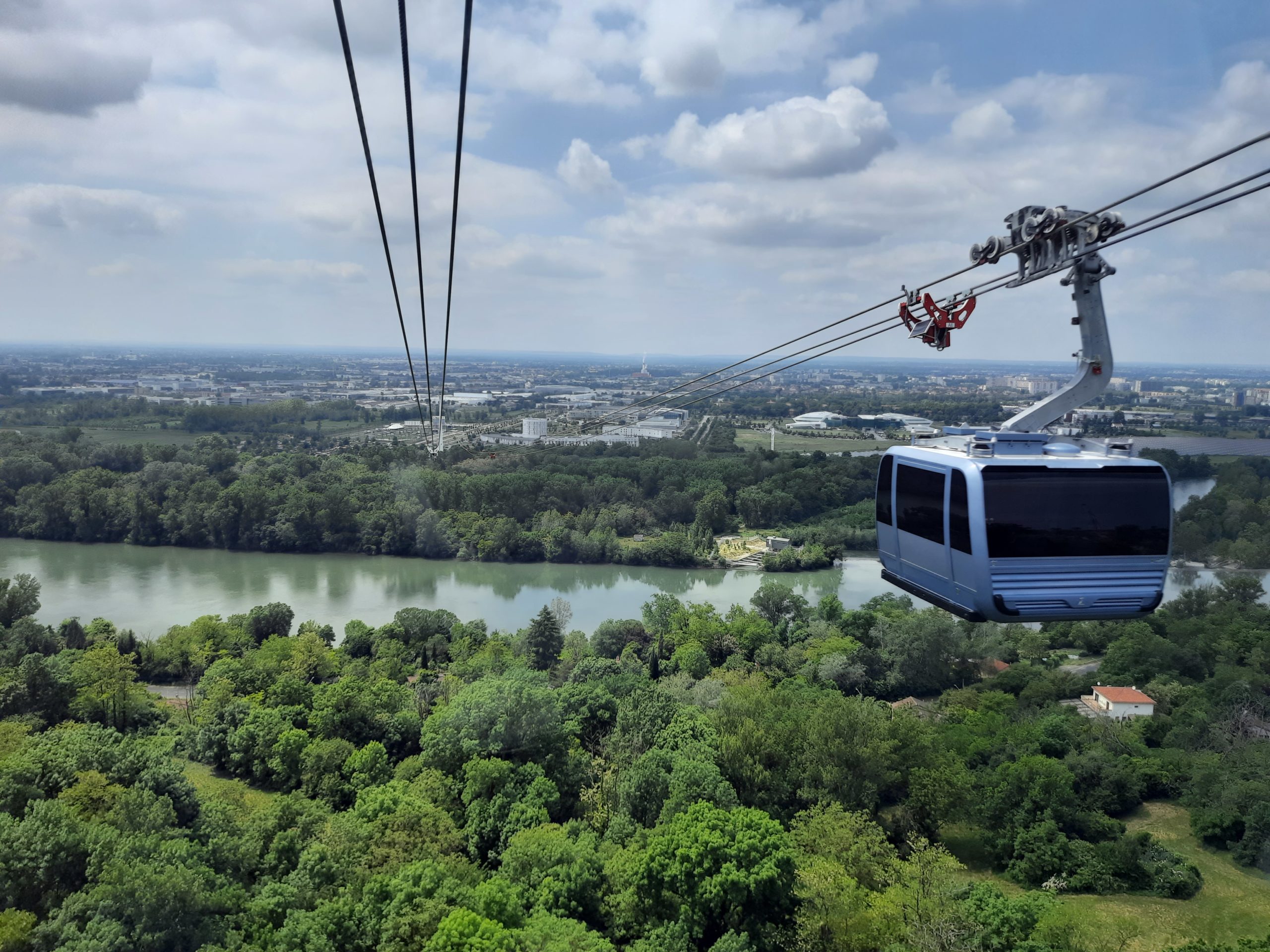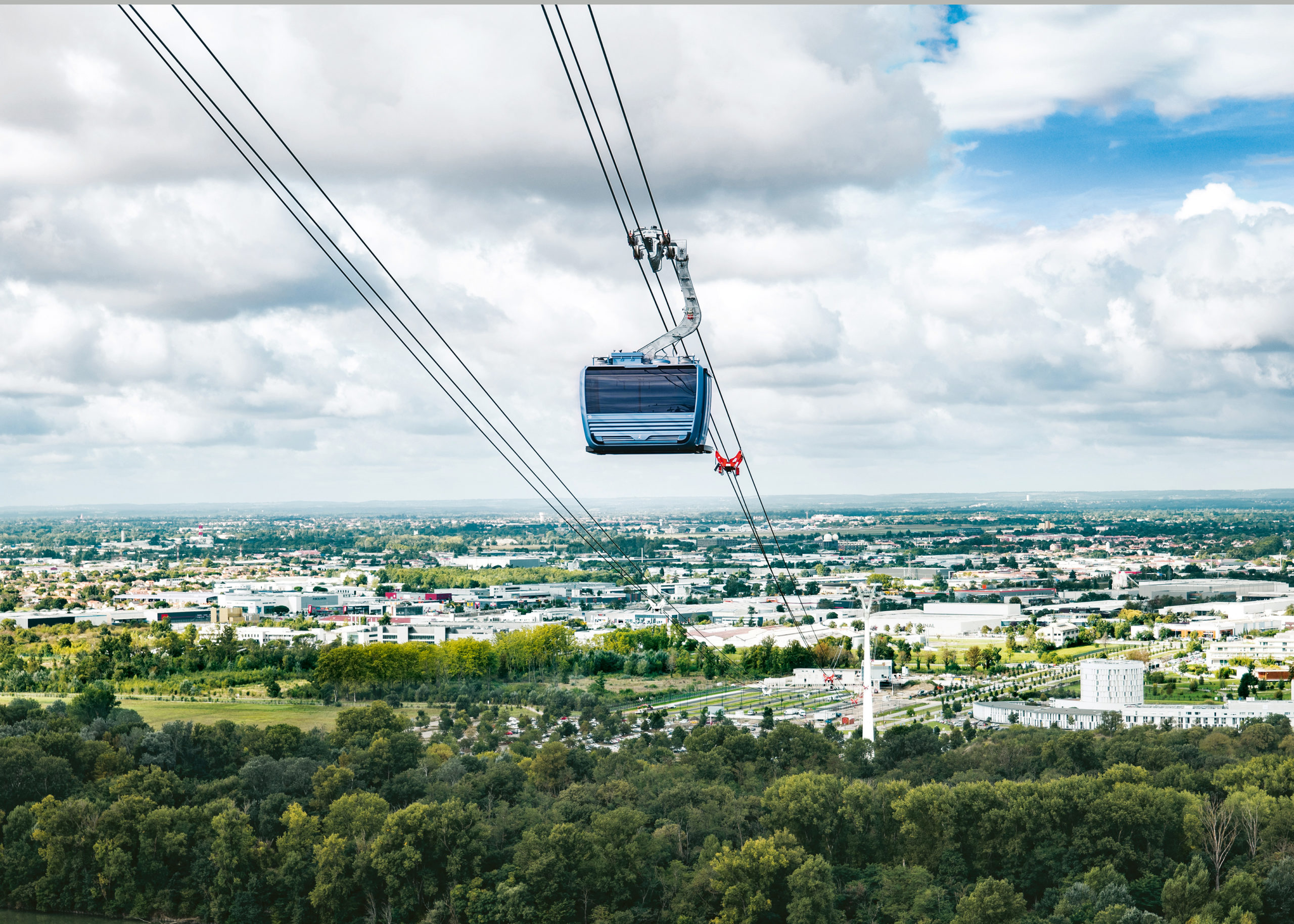
Cities, SI-Urban
The french city Toulouse now has an urban 3S cable car
Like New York, Mexico City and Barcelona, the city with a population of 500,000 in the south of France is backing the cable car as an environmentally friendly, efficient and sustainable mode of public transport.
Here, the installation known as “Téléo” has been constructed as an exceptionally space-saving tri-cable circulating ropeway (3S) and, at three kilometres long, it is not only France’s longest urban ropeway but also the longest urban 3S track in Europe.
The clever routing here creates a high-performance connection between popular hotspots in the city, and the reduced number of supports means that it blends harmoniously into the surroundings. French ropeway manufacturer POMA is responsible for the project.
Integration into the transport network
Construction work in Toulouse began in late summer 2019 and the ropeway opened in May 2022.
“The timeframe for an installation of this size was very short, especially as we were continuously responding to customer requests,” POMA Project Manager Philippe Laville reports.
One example is the repositioning of a station at the request of the residents. In general, the system is fully integrated into the public transport network and – with a journey time of only ten minutes – it connects three major transport hubs in the metropolis in the south of France:
the “Oncopole” university institute for cancer research, “Rangueil” hospital, and “Paul Sabatier University” with its 30,000 students. In the past, a car journey here took over 30 minutes.
The cable car in Toulouse begins at the Oncopole institute and crosses the river Garonne and Pech David Hill to reach Rangueil hospital. The route then runs down to Paul Sabatier University

The location of the future station very close to the university also provides an easy connection to the hub between the underground railway and the bus, additionally making the new ropeway a mode of transport that is suitable travellers. The ropeway operators are therefore expecting 8,000 passengers per day.
The intensive frequency of “Téléo” ensures maximum efficiency in the city traffic: one gondola leaves every 90 seconds at peak times, providing maximum capacity between 5.00 am and 12.00 am on the three kilometres of France’s longest ropeway.
The speed and transport capacity of the cable car can be adjusted to the passenger volume (peak versus off-peak times).
Effect of three cables
For the project, POMA is relying on the tried and tested tri-cable technology with two supporting cables and one traction cable. This technology ensures maximum stability even in adverse weather conditions and guarantees reliable operation even at wind speeds over 100 kilometres per hour.
Moreover, the special design allows exceptionally harmonious integration into the cityscape and seals only few surfaces. Over the entire threekilometre length, only five supports have been constructed. At the same time, the noise emissions in their immediate vicinity are reduced to a minimum.
“This is a major advantage, as free land in cities is often rare and the noise great,” Philippe Laville emphasises. The gondolas themselves have no drive; the motor is located in a single, soundproof station.
As they cross a river and built-up areas, an integrated rescue system can move the gondolas into the stations in an emergency.

Design of the gondolas
Visually, the new system also offers additional appeal: the gondolas stand out in the unique design by Pininfarina, which combines technology, aesthetics and functionality.
The system, which is powered by DirectDrive, is fitted with a total of 15 Symphony gondolas in urban design, each of which offers space for 34 people. As on the entire public transport network, the gondolas of the new 3S track also have designated space for people with limited mobility.
Stations
At the stops, wide doorways and step-free entry contribute to barrier-free access. When it comes to localisation, infotainment and safety, screen and audio announcements as well as a CCTV system ensure compliance with modern standards.
With the 3S system, the three stations have a very spacious design and have been approved by French architectural association Bâtiments de France as buildings that are perfectly integrated into the surroundings.

Operation
Urban transport company Tisseyo Voyageurs will be responsible for operation and safety of the ropeway. In the first three years, Altiservice – an operator of two ski resorts in the Pyrenees – will provide all the staff, in order to ensure a smooth start, as Tisseyo Voyageurs has previous experience “only” with underground railways, trams and buses.
However, the transport company will retain overall responsibility for ticketing, control, IT security and management, building maintenance and general safety (staff, systems).
“Only one driver and two machine operators will be needed for operation – with four entrances and exits. We are very proud of this limited staff requirement,” Tanguy Lansard, Head of Operations & Maintenance at POMA, is pleased to report.
This is ensured by video surveillance in the intermediate stations. Occasionally there will also be a need for an operations manager, a maintenance technician and a cleaner.
Maintenance
For maintenance, Tisseyo Voyageurs has entered a flat-rate maintenance agreement with POMA and Altiservice for 20 years. POMA will supply the maintenance technology and spare parts for the track and cables. Altiservice will provide technicians and other resources.
“We promise monthly ropeway technical availability of 99.35 percent, subject to a penalty. On average, this means “Téléo” will malfunction for fewer than eight minutes in every 20 operating hours per day,” Lansard emphasises.
To achieve this, since July 2021, POMA has continued to train the already well-trained Altiservice technicians on the in-house UPilot tool, Lansard says:
“We are proud of our success in the urban market together with our Alpine customer Altiservice.”
TÉLÉO TOULOUSE
| Length | 3 km |
| Altitude difference | 100 m |
| Transport capacity | 1500 (2000) |
| Stations | 3 |
| Gondolas | 15 (20) |
| Gondola capacity | 34 p. |
| Towers | 5 |
| Max. speed | 27 km/h |
| Operating speed | 20 km/h |
| Journey time | 10 min |
| Investment costs | 82 m. € |
| Maintenance costs (20 years) | 38 m. € |







